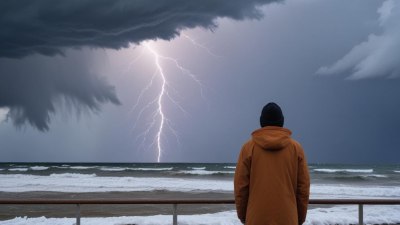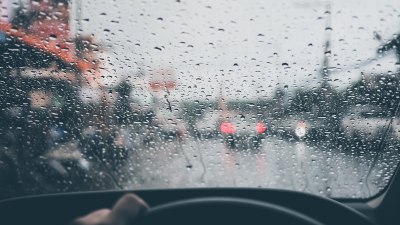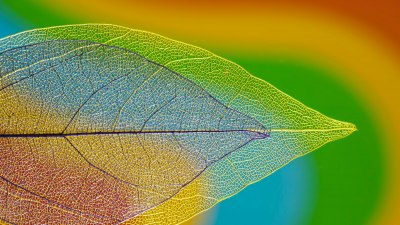Why Rainfall Feels Colder Than the Air Temperature
Explore the science behind why rainfall can feel colder than the actual air temperature.

Have you ever stepped outside during a rainstorm and been surprised at how much cooler it feels than the temperature indicated on the weather report? This phenomenon is not just a figment of our imagination; it has its basis in science. Let's delve into the reasons why rainfall often feels colder than the air temperature.
Understanding Temperature Perception
To understand why rainfall feels colder, we first need to grasp how our body perceives temperature. Human beings feel temperature through thermal receptors located in our skin. These receptors respond to the actual temperature of the air as well as the amount of moisture present in the environment. When air is saturated with water vapor, it can feel warmer, but when rain falls, the dynamics change dramatically.
Evaporative Cooling
One primary reason rainfall feels colder involves the concept of evaporative cooling. Whenever rain hits the ground or even our skin, some of the water begins to evaporate. During the evaporation process, the water molecules absorb heat energy from their surroundings, which can include our warm skin. As these water molecules transition from a liquid state to a gaseous one, they cool the surface around them. Essentially, when rainwater evaporates off of our skin, it steals heat away from our body, making us feel colder.
Temperature of Raindrops
Interestingly, raindrops themselves are usually cooler than the surrounding air. As rain falls through the atmosphere, it can encounter cooler air at different altitudes. By the time the raindrops reach ground level, they often have a lower temperature than that of the air we are breathing. Thus, when the rain hits us, it may be adding cooler air to an already humid and warm environment, enhancing the sensation of cold.
Wind Chill Effect
The wind chill factor also plays a significant role in how we perceive temperature during rainfall. Rain usually occurs in windy conditions, and the combination of wind and rain can increase the rate of heat loss from our bodies. When wind blows across our wet skin, it accelerates the evaporation of moisture, leading to an increased cooling effect. The combination of water evaporation and wind can make the temperature feel significantly colder than what the thermometer indicates.
Humidity and Heat Index
Humidity plays a key role in how we perceive temperature. High humidity can make us feel warmer due to the reduced effectiveness of our body’s sweat evaporation, while low humidity can make us feel cooler. When it rains, the air typically becomes much more humid, but the lower temperature of the falling rain can counteract this heat. Our perception of the temperature might not change as much with humidity alone, but it can combine with rainfall to amplify that chilling effect.
The Role of Clothing
What we wear can also impact how we feel during a rainstorm. If we are dressed in lightweight materials that do not insulate well or dry quickly, the rain will soak into the clothing, leading our bodies to lose even more heat. When clothing absorbs rainwater, it becomes cooler than the original fabric, and this coolness can transfer to our skin, further exacerbating the feeling of cold. Choosing the right rain gear can mitigate some of this perception, as waterproof and insulated clothing can help retain warmth.
Geographical Considerations
The geographical context of the rainfall event plays an influential role too. For instance, rain in coastal areas may evoke different feelings than rain in a mountainous region. Coastal rain might come with warmer air temperatures, while rain in mountainous terrains may be accompanied by significantly cooler temperatures due to elevation. Understanding these geographical nuances can help in anticipating how cold rain may feel based on the location.
Psychological Factors
There are also psychological components at play. Seasonal or situational expectations can change our perception of temperature. If it's a hot summer day and it begins to rain, the immediate response may be relief; however, it might also shock us with its coolness if we aren't prepared. Conversely, during the colder months, rain can evoke feelings of chill and dread, which in turn influences our perception of how cold the rainfall truly feels.
Impact of Climate Change
Finally, climate change could be altering the nature of rainfall patterns and temperatures. With climate change, we are witnessing more extreme weather events, including heavier downpours and shifts in humidity. These changes in rainfall intensity and air temperatures can affect how we perceive cold rain versus warm rain. Staying informed about climate patterns can help us better understand the underlying shifts in our environment and how they impact our daily experiences with weather.
In conclusion, the seemingly simple question of why rainfall feels colder than air temperature entails a variety of scientific principles. From thermal perception and evaporative cooling to wind chill and psychological factors, a range of elements contribute to this phenomenon. By deepening our understanding of how rain interacts with our environment and bodies, we can better prepare for the next rainstorm and manage our expectations of temperature shifts. The next time you step outside into a downpour, remember the science behind the chill; it might just add an extra layer of appreciation for the complexities of nature.











